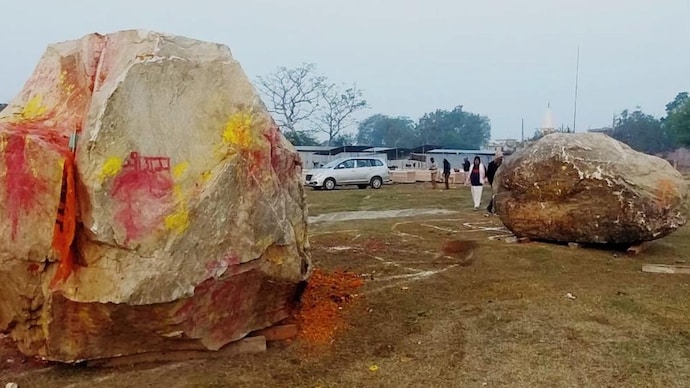- Two sacred Shaligram stones arrived in Ayodhya to be used in the creation of the Lord Ram and Janaki idols at the Ram Temple.
- Shaligram stones are ammonite fossils, which are mollusks that lived between 400 million and 65 million years ago.
- They can be found on the Shaligram Pilgrimage in the Himalayas of Nepal.
- They are specifically from the Early Oxfordian to the Late Tithonian Age, roughly 165-140 million years ago, near the end of the Jurassic Period.
- This stone, which is mostly found in the Kali Gandaki, a tributary of the Gandaki River in Nepal, is revered as a representation of Lord Vishnu.
- The stone is thought to have divine powers and is a symbol of good fortune and prosperity.

The significance of mythology
- The use of shaligrama shilas in worship can be traced back to Adi Shankara’s time through his works.
- It is specifically mentioned in the Taittiriya Upanishad.
- The statues of Vishnu in Thiruvananthapuram’s Padmanabhaswamy Temple and Garhwal’s Badrinath Temple, as well as Krishna in Udupi’s Krishna Matha and Vrindavana’s Radha Raman Temple, are also thought to be made of shaligrama shilas.
Source: https://indianexpress.com/article/explained/what-is-shaligram-stone-ram-temple-8422356/
